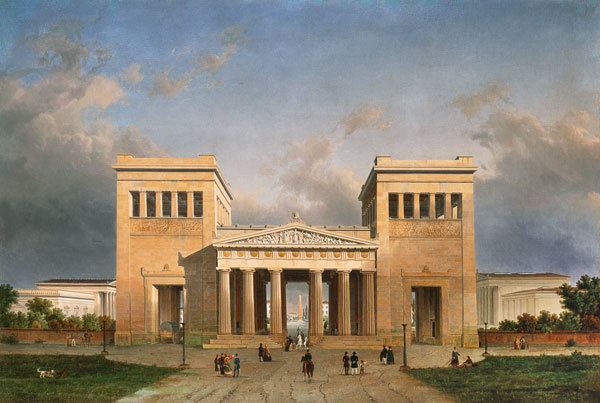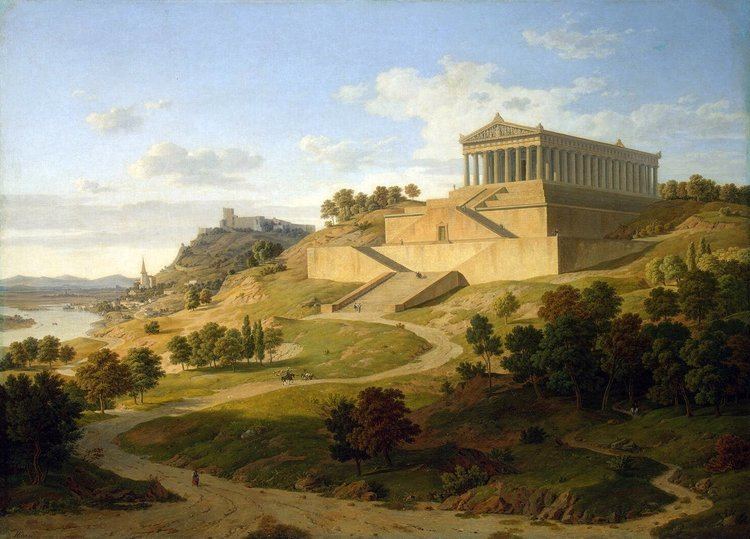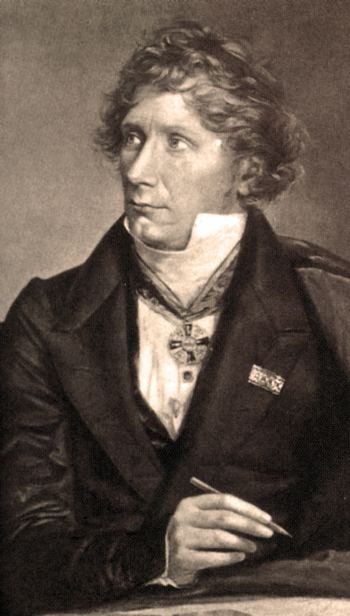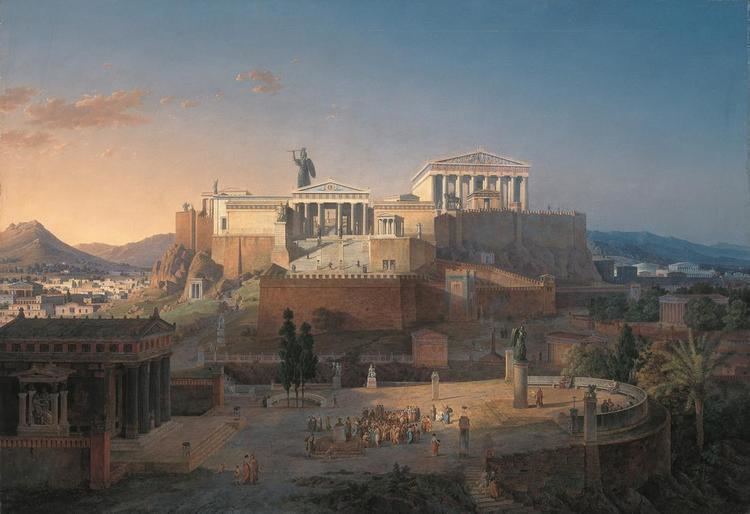Name Leo Klenze Role Architect | Awards Royal Gold Medal | |
 | ||
Structures The Walhalla, Propylaea, Ruhmeshalle, Neuschwanstein Castle, Glyptothek Similar People Hans Dollgast, Ludwig II of Bavaria, Eduard Riedel, Christian Jank, Therese of Saxe‑Hildburghausen | ||
Walhalla by Leo von Klenze (XIXth century)
Αλέξανδρος Παπαγεωργίου Βενετάς, Συνέντευξη για τον Leo von Klenze (1784-1864))
Leo von Klenze (Franz Karl Leopold von Klenze; 29 February 1784, Buchladen (Bockelah / Bocla) near Schladen – 26 January 1864, Munich) was a German neoclassicist architect, painter and writer. Court architect of Bavarian King Ludwig I, Leo von Klenze was one of the most prominent representatives of Greek revival style.
Contents
- Walhalla by Leo von Klenze XIXth century
- Leo von Klenze 1784 1864
- Biography
- Architectural works
- References

Biography

Von Klenze studied architecture and public building finance under Friedrich Gilly in Berlin, and worked as an apprentice to Charles Percier and Pierre François Léonard Fontaine in Paris. Between 1808 and 1813 he was a court architect of Jérôme Bonaparte, King of Westphalia. Later he moved to Bavaria and in 1816 began to work as court architect of Ludwig I. The King's passion for Hellenism shaped the architectural style of von Klenze. He built many neoclassical buildings in Munich, including the Ruhmeshalle and Monopteros temple. On Königsplatz he designed probably the best known modern Hellenistic architectural ensemble. Near Regensburg he built the Walhalla temple, named after Valhalla, the home of gods in Norse mythology.

When Greece won its independence, Ludwig I's son Otto became the country's first king. Von Klenze was invited to Athens to submit plans of city reconstruction in the style of Ancient Greece. Russian Emperor Nicholas I commissioned von Klenze in 1838 to design a building for the New Hermitage, a public museum that housed the Romanov collection of antiquities, paintings, coins and medals, cameos, prints and drawings, and books. Prior to this, von Klenze had also designed and arranged museum galleries in Munich, including the Glyptothek, Ludwig I's museum for antique sculpture, and the Alte Pinakothek, a painting gallery for the pictures of the Wittelsbach collection.

Von Klenze was not only an architect, but also an accomplished painter and draughtsman. In many of his paintings ancient buildings were depicted. Those served as models for his own architectural projects. Klenze studied ancient architecture during his travels to Italy and Greece. He also participated in excavations of ancient buildings in Athens and submitted proposals for the restoration of the Acropolis.

Klenze collected works of important contemporary German painters. He sold his collection, including 58 landscapes and genre paintings, to King Ludwig I in 1841. These paintings form the core of the Neue Pinakothek museum's collection.
Von Klenze married Maria Felicitas Blangini (1790–1844) a beauty at the court of Ludwig I. Their granddaughter Irene Athenais von Klenze became Countess Courten (1850–1916).
Von Klenze died in 1864 and was buried in the Alter Südfriedhof in Munich.
